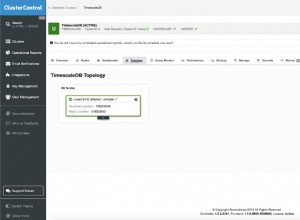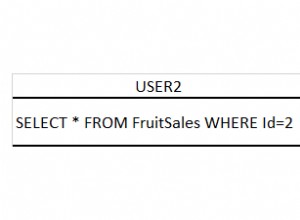Ich habe einige Zeit damit verbracht und bin schließlich auf eine funktionierende Lösung gekommen.
Ich werde es hier zum späteren Nachschlagen veröffentlichen.
Lösung
Zunächst einmal haben Sie drei Tabellen (foo_table , bar_table , baz_table ), die auf Ihre users verweisen Tabelle mittels Fremdschlüssel (genannt user_id auf alle Fälle). Sie müssen die in diesen Spalten gespeicherten IDs von id ersetzen zu another_id . So geht's:
-- We are dropping the foreign key constraint on dependant table (in other case it will prevent us from updating the values)
ALTER TABLE foo_table DROP CONSTRAINT fk_e52ffdeea76ed395;
-- Then, we're swapping values in foreign key column from id to another_id
UPDATE foo_table T SET user_id = (SELECT another_id FROM users WHERE id = T.user_id);
-- And finally we're creating new foreign key constraint pointing to the another_id instead of id
ALTER TABLE foo_table ADD CONSTRAINT fk_e52ffdeea76ed395 FOREIGN KEY (user_id) REFERENCES users (another_id) ON DELETE CASCADE;
Sie müssen die obigen Abfragen für jede abhängige Tabelle wiederholen.
Danach zeigen alle abhängigen Tabellen auf Ihre neue another_id Spalte.
Am Ende müssen wir nur den Primärschlüssel ersetzen:
-- 1. Dropping the original primary key
ALTER TABLE users DROP CONSTRAINT users_pkey
-- 2. Renaming existing index for another_id (optional)
ALTER INDEX uniq_1483a5e93414710b RENAME TO users_pkey
-- 3. Creating new primary key using existing index for another_id
ALTER TABLE users ADD PRIMARY KEY USING INDEX users_pkey
-- 4. Creating index for old id column (optional)
CREATE UNIQUE INDEX users_id ON users (id)
-- 5. You can drop the original sequence generator if you won't need it
DROP SEQUENCE users_id_seq
Sie können sogar die ursprüngliche id löschen Spalte, wenn Sie möchten.
Ich hoffe, es wird jemandem helfen.




